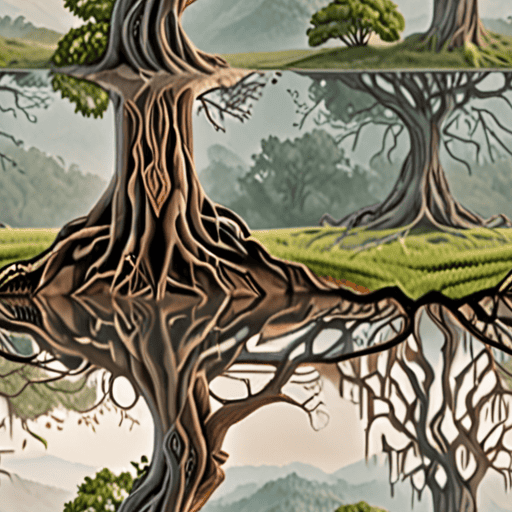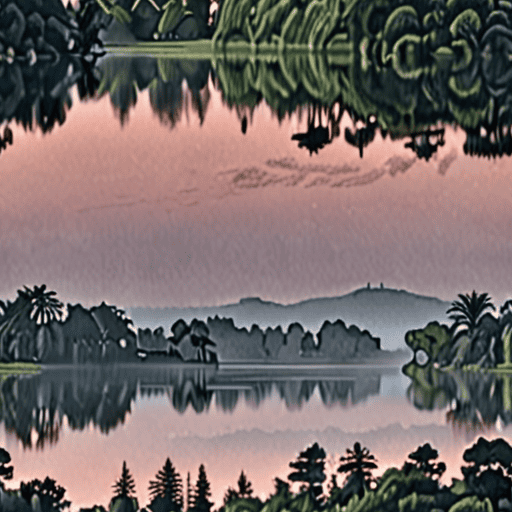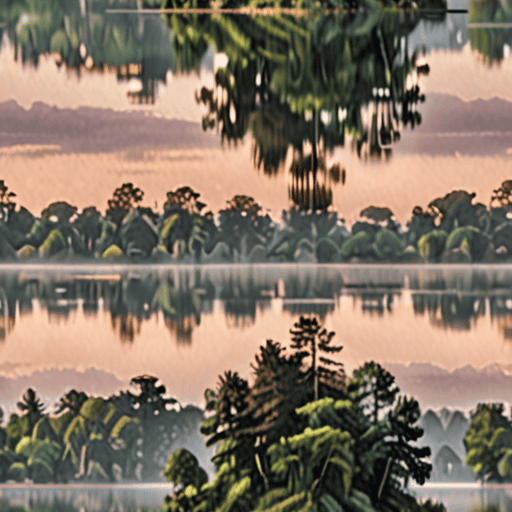Ensuring access to clean and abundant water is crucial for human survival and economic development, making it essential to secure water sources and protect these vital resources for future generations. With the increasing threat of water pollution, climate change, and over-extraction, it has become imperative to adopt effective measures to safeguard our water supplies. From identifying safe drinking water sources to implementing sustainable water management practices, there are numerous ways to protect our water resources and prevent their degradation. In this article, we will explore the importance of securing water sources, discuss the safest sources of water supply, and provide valuable insights into the methods of protecting water sources from pollution, conserving groundwater, and promoting sustainable water management practices.

Securing a Water Source
We take securing a water source very seriously at Nature and Culture International, as it’s essential for the health and well-being of our communities.
- First, we recommend locking your well cap, wellheads, pumps, storage tanks, and other components to prevent unauthorized access.
- Consider protecting the well with secure fencing to deter potential tampering or vandalism.
- If you have an alarm system, be sure to install an anti-tamper device on the well cap to alert you of any potential security breaches.
- Regularly check irrigation systems and other vulnerable areas to identify and address any potential security risks.
- At Nature and Culture International, we’ve worked with communities to create protected areas, promote sustainability, and preserve biodiversity, which has helped mitigate climate change through nature-based solutions.
- In fact, our efforts have resulted in the protection of 26 million acres, avoiding 3.9 billion tons of CO2 emissions.
- Other organizations, such as The Nature Conservancy, also work towards securing water sources and promoting sustainable land-use practices.
- The World Wildlife Fund (WWF) also plays a crucial role in conserving freshwater ecosystems and promoting sustainable water management practices.
- By working together, we can ensure the long-term health and sustainability of our water sources.
For more information on how to secure a water source, visit our website at climate.natureandculture.org .
Additionally, learn more about our efforts to protect and conserve water sources at waterconservation.natureandculture.org .
Discover how you can get involved in securing water sources and promoting sustainable land-use practices at getinvolved.natureandculture.org .
The Safest Source of Water Supply
At Nature and Culture International, we understand the importance of accessing clean and safe drinking water.
- We work tirelessly to protect and conserve water sources around the world, recognizing the vital role they play in supporting human life and ecosystems.
- In this article, we’ll explore the safest source of water supply and why groundwater stands out as a preferred option.
Why Groundwater is Considered the Safest Source of Water Supply
Groundwater is generally considered safer than surface water due to its lower risk of contamination.
- Groundwater is less susceptible to pollution from agricultural runoff, industrial waste, and sewage, which can contaminate surface water sources.
- Additionally, groundwater is often filtered through layers of rock and soil, removing impurities and making it a cleaner source of water.
Surface Water vs. Groundwater: A Comparison
While both surface water and groundwater can provide safe drinking water, there are key differences between the two.
- Surface water, such as rivers and lakes, can be contaminated by pollutants and pathogens, posing health risks to those who consume it.
- On the other hand, groundwater is typically less prone to contamination and offers a more reliable source of clean drinking water.
Nature-Based Solutions for Water Conservation
At Nature and Culture International, we believe that protecting and conserving water sources requires a holistic approach that incorporates nature-based solutions.
- We work with local communities to establish protected areas, promote sustainable land-use practices, and implement innovative technologies that support water conservation efforts.
- By taking a collaborative and adaptive approach, we aim to safeguard water sources for future generations and mitigate the impacts of climate change.
Protecting Our Planet’s Most Precious Resource
As we continue to face the challenges of climate change, water scarcity, and environmental degradation, it’s essential that we prioritize the protection and conservation of our planet’s most precious resource – water.
At Nature and Culture International, we’re committed to working towards a future where everyone has access to clean, safe, and abundant water, and we invite you to join us in this critical effort.

Safe Drinking Water Sources
We understand the importance of having access to clean and safe drinking water, which is essential for human health and well-being.
- Household Connections
- Public Standpipes
- Boreholes
- Protected Dug Wells
- Protected Springs
- Rainwater Collection
A household connection is a pipe that brings treated water directly into your home, making it easy to access clean drinking water.
Public standpipes are outdoor faucets that provide access to clean drinking water, often located in public spaces or parks.
Boreholes are deep holes drilled into the ground to access underground water sources, which can be a reliable source of clean drinking water.
Protected dug wells are shallow wells that are covered and protected from contamination, providing a safe source of drinking water.
Protected springs are natural sources of water that are covered and protected from contamination, offering a safe source of drinking water.
Rainwater collection systems collect and store rainwater for non-potable uses, reducing the demand on municipal water supplies and providing a sustainable source of water.
We work tirelessly to protect and preserve these safe drinking water sources, ensuring that future generations have access to clean and healthy water.
At Nature and Culture International , we believe that everyone deserves access to safe and clean drinking water, and we’re committed to protecting and preserving these vital resources.
Learn more about our efforts to protect and preserve safe drinking water sources at our website .
Additionally, organizations like UNICEF and World Wildlife Fund are working towards the same goal of providing access to safe and clean drinking water for all.
We’re proud to be part of a global community working together to protect and preserve our planet’s most precious resource – water.

Protecting Water Sources
We take protecting water sources seriously at Nature and Culture International.
- Our approach involves working with local communities to establish protected areas, promoting sustainable land-use practices, and preserving biodiversity.
- This helps to safeguard water sources from pollution, deforestation, and other human activities that can harm the environment.
- By doing so, we contribute to the health and well-being of people and wildlife alike.
Key Strategies for Protecting Water Sources
-
Establishing Protected Areas:
- We work with local communities to designate and manage protected areas, which helps to conserve water sources and prevent pollution.
- These areas serve as natural buffers against human activities that can harm the environment.
-
Promoting Sustainable Land-Use Practices:
- We encourage farmers and landowners to adopt sustainable agricultural practices, reducing the risk of soil erosion and water pollution.
- This approach also helps to maintain healthy ecosystems and support biodiversity.
-
Preserving Biodiversity:
- We recognize the importance of preserving biodiversity in maintaining healthy ecosystems and supporting water sources.
- By conserving habitats and species, we help to maintain the delicate balance of nature.
Why Protecting Water Sources Matters
Water is essential for life, and its protection is crucial for human health, economic development, and environmental sustainability.
- Access to clean water is a fundamental human right, and its scarcity can have devastating consequences for communities.
- Healthy water sources support agriculture, industry, and energy production, driving economic growth and development.
- Conserving water sources also helps to mitigate the impacts of climate change, supporting resilient ecosystems and communities.
At Nature and Culture International, we remain committed to protecting water sources and promoting sustainable development for future generations.
Protecting Our Groundwater
We take protecting our groundwater very seriously at Nature and Culture International.
- One of the most effective ways to protect groundwater is to use water wisely.
- This includes taking short showers, running only full loads of dishes and laundry, and repairing leaks promptly.
- If you own a well, creating a zone of protection around your well and inspecting your well on a regular basis can also help prevent contamination.
- Reading the annual Consumer Confidence Report or Water Quality Report provided by your public water system can give you valuable information about the safety of your drinking water.
- At Nature and Culture International, we work with communities to create protected areas, promote sustainability, secure water sources, and preserve biodiversity for a thriving, stable climate.
- In fact, in our 25 years, we have protected 26 million acres that avoid 3.9 billion tons of CO2 emissions.
- We also partner with organizations like The Nature Conservancy and the World Wildlife Fund to advance conservation efforts and protect critical ecosystems.
- Additionally, we support policies and programs that promote sustainable land-use practices, reduce pollution, and protect watersheds.
- By working together, we can ensure that our groundwater remains safe and healthy for future generations.
-
Learn more about our conservation efforts and how you can get involved at our website .
-
You can also visit the Environmental Protection Agency for more information on protecting groundwater and promoting sustainability.
-
Furthermore, check out the United States Geological Survey for valuable resources on groundwater management and conservation.
- Together, we can make a difference and protect our precious groundwater resources.

Conserving Water Resources
We take pride in protecting and preserving our planet’s precious water resources.
- At Nature and Culture International, we believe that every individual has a role to play in conserving water.
- One simple yet effective way to start is by reducing our daily water usage through efficient habits.
- This can be achieved by fixing leaks promptly, installing low-flow fixtures, and taking shorter showers.
- Additionally, we can harvest rainwater for non-potable purposes like watering plants or washing cars.
- Another crucial aspect is promoting sustainable agriculture practices that minimize water waste and optimize crop yields.
- By adopting these measures, we can significantly reduce our water footprint and contribute to a healthier environment.
Water Conservation Strategies
- Implementing efficient irrigation systems in agricultural settings can greatly reduce water consumption.
- Using drought-resistant crops and practicing crop rotation can also help minimize water requirements.
- Furthermore, we can promote water-saving technologies like greywater reuse systems and advanced wastewater treatment facilities.
- Education and awareness campaigns can also play a vital role in encouraging individuals to adopt water-conserving behaviors.
- Collaborating with local communities and governments to develop and implement effective water management plans is essential.
Protecting Biodiversity and Ecosystems
As we work towards conserving water resources, it’s equally important to protect the delicate balance of our ecosystems.
- Preserving natural habitats and restoring degraded ecosystems can help maintain healthy watersheds and prevent water pollution.
- Supporting conservation efforts and protecting endangered species can also contribute to the overall health of our water resources.
- By addressing the root causes of environmental degradation, we can ensure a sustainable future for generations to come.
Conclusion
At Nature and Culture International, we’re committed to protecting and preserving our planet’s precious water resources.
Through education, community engagement, and innovative solutions, we can make a significant impact on conserving water and promoting a healthier environment.
Together, let’s work towards a future where water is abundant, clean, and accessible for all.

0 Comments